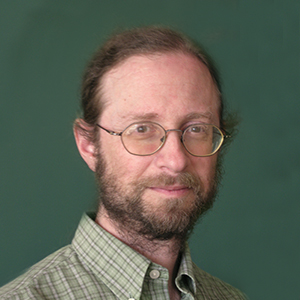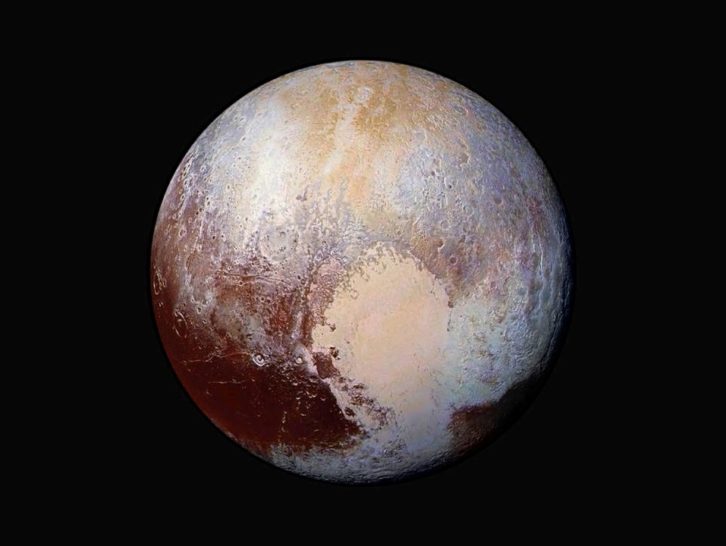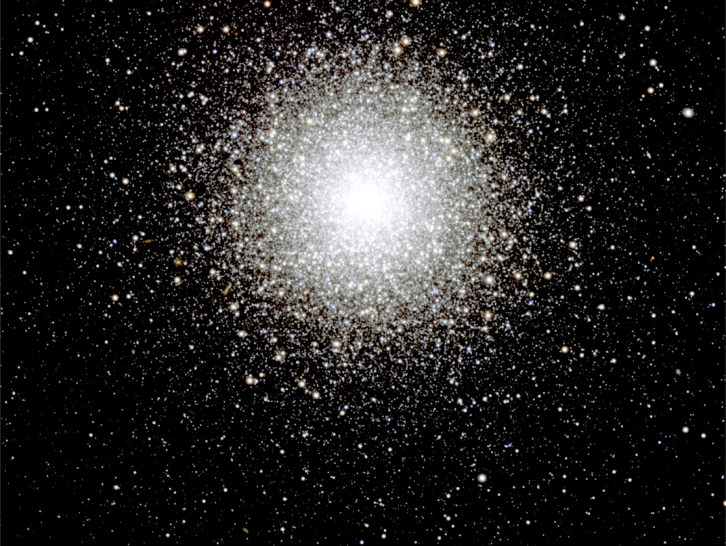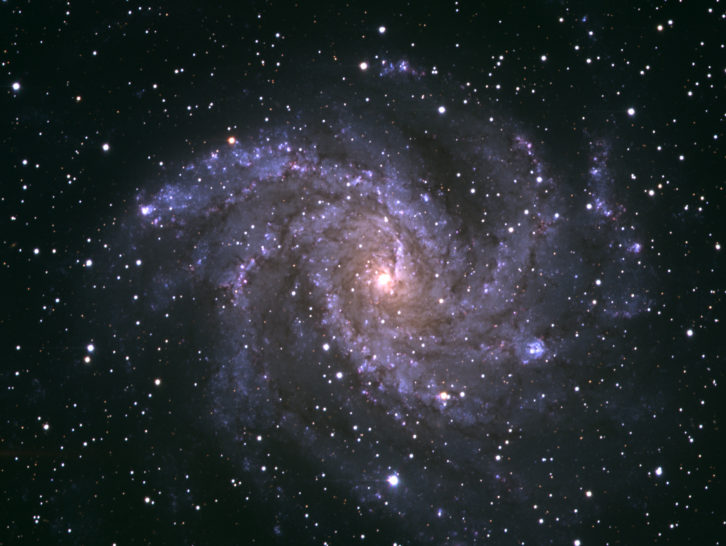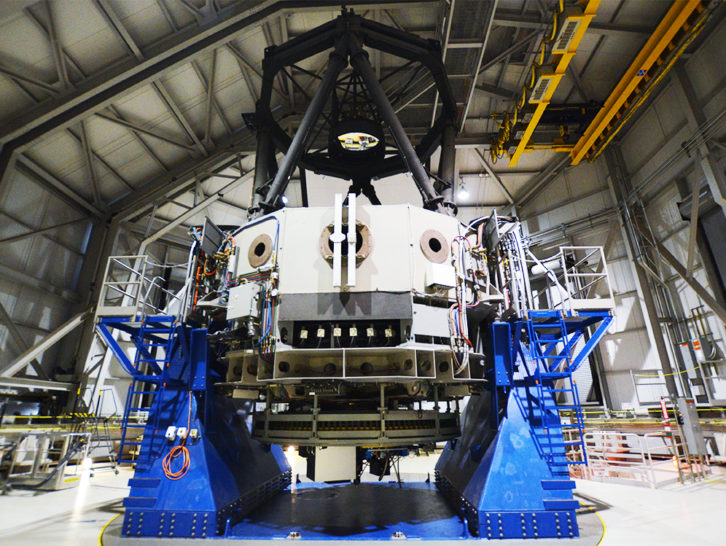Galactic & Extragalactic Astronomy
In 1912, V.M. Slipher was the first person to observe the Doppler shift in the spectra of a galaxy. His observations of the redshifts of galaxies were the first evidence for the expansion of the Universe. Research on structures of galaxies and of the universe continues at Lowell Observatory today.
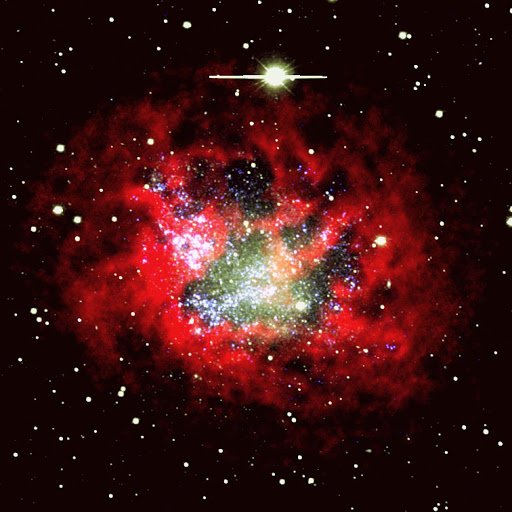
Dwarf irregular galaxy IC1613, one of the targets in Deidre Hunter’s LITTLE THINGS project. In this color composite neutral hydrogen gas is red, light from older stars (visual V-band) is green, and light from young stars (GALEX far ultraviolet) is blue. (The LITTLE THINGS Team 2012, Astronomical Journal, 144, 134)
Where do galaxies end?
Dr. Deidre Hunter studies dwarf irregular galaxies. How these tiny galaxies have managed to turn their gas into stars is perplexing. According to current models, the gas density in dwarf irregulars is too low to form the clouds out of which new stars are made. And yet Hunter has shown that their disks of stars extend long distances to exceedingly low densities of gas and stars.
Where do galaxies “end” and how do stars form at galactic edges? Hunter is using the Lowell Discovery Telescope (LDT) for ultra-deep imaging of dwarf irregulars in order to inspect the distribution and history of formation of stars in the far outer disks of dwarf galaxies. Hunter and her collaborators are also using observations made with the Very Large Array Radio Interferometer to reveal the distribution and motions of the hydrogen gas and observations made with ALMA of the molecular clouds. Together these data will give us a better understanding of the structure and evolution of tiny galaxies. The implications of these observations go beyond just small galaxies and give us a glimpse of how stars form in times of very low metallicity, such as in the early universe.
Learn more about Dr. Deidre Hunter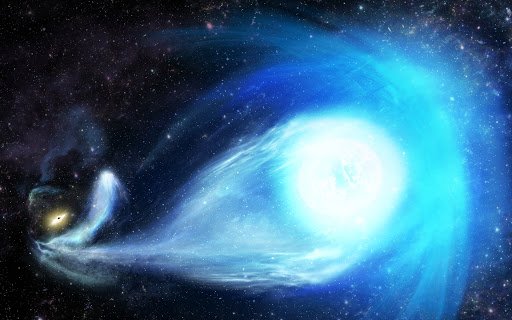
Artist’s rendering of S5-HVS1 being ejected from the neighbourhood of the black hole at the center of the Milky Way discovered by Kyler Kuehn’s S5 group (James Josephides/Swinburne Astronomy Productions).
Stellar streams
Dr. Kyler Kuehn’s interests are in the structure and build up of the Milky Way galaxy. Over the last several decades astronomers have come to realize that giant spirals like the Milky Way grow by tearing apart and absorbing tiny dwarf galaxies. Kuehn initiated the Southern Stellar Stream Spectroscopic Survey (S5) that mines deep images produced by the Dark Energy Survey at CTIO in Chile. S5 uses these images, along with spectroscopic follow-up with the Anglo-Australian Telescope, to search for evidence of globular star clusters or dwarf galaxies in the halo of the Milky Way that have been pulled apart by our Galaxy’s gravity. That search yielded the serendipitous discovery of a hyper-velocity star (S5-HVS1) that was ejected at high speed from the neighbourhood of the black hole at the center of the Milky Way. Kuehn is also using LDT to make observations with EXPRES of the northern hemisphere counterparts of the streams observed by S5. Additionally, Kuehn is a member of MagLiteS, which is surveying a region around the Magellanic Cloud galaxies, and DELVE, which is a deep survey to find dwarf galaxies.
Learn more about Dr. Kyler Kuehn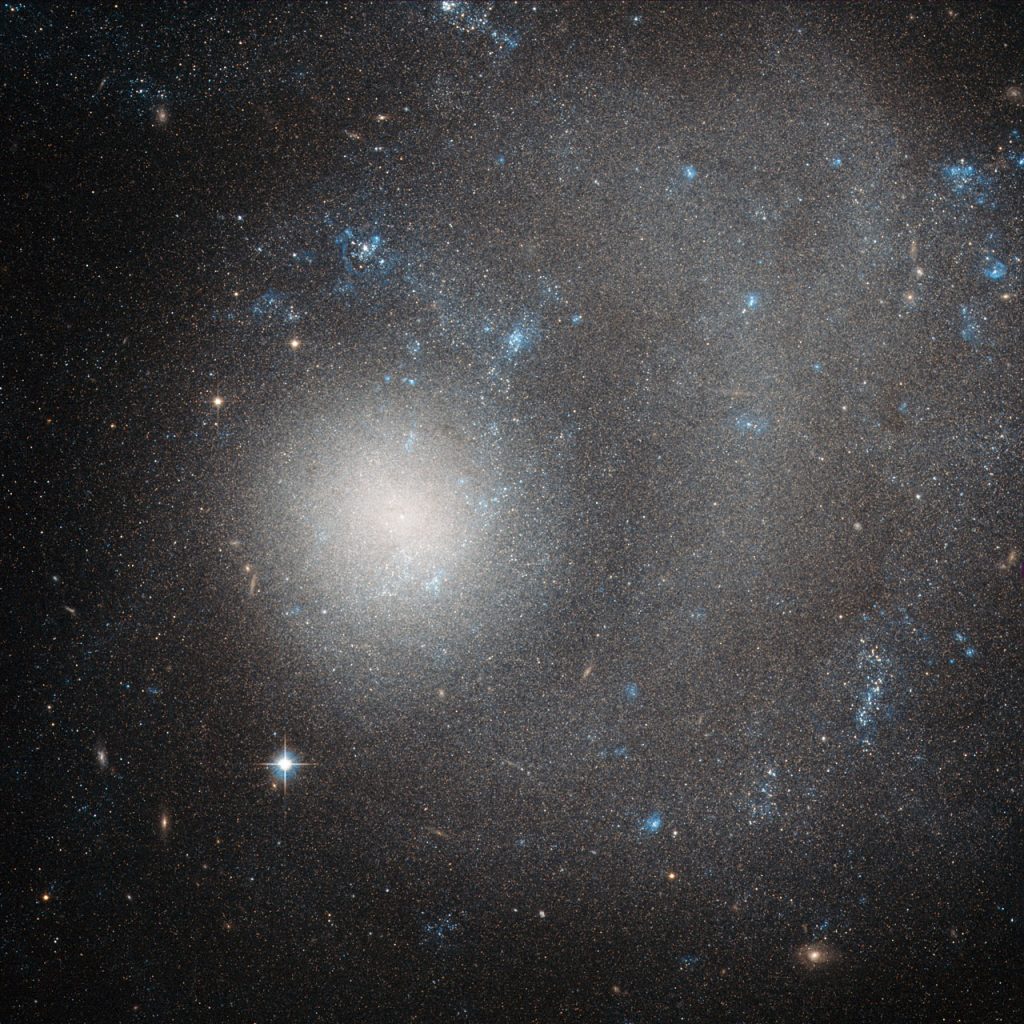
The asymmetric dwarf galaxy NGC 5474 is part of the group of galaxies surrounding Messier 101 (the “Pinwheel”). Stephen Levine studies the formation and evolution of misalignments like that seen here between the brighter central core and the more diffuse outer region, which is likely due to a past encounter with another galaxy in the group. (ESA/Hubble & NASA; taken with the Advanced Camera for Surveys on Hubble)
Galactic lopsidedness
Dr. Stephen Levine is interested in the structure and dynamical evolution of lopsided disk and dwarf irregular galaxies through numerical simulations of the dynamics of their disks. His simulations have shown that lopsidedness, when the brightest part of the galaxy is displaced from the center, could result if the disk is not lying in the center of the galaxy’s extended dark matter halo and the disk is spinning opposite to the direction of its orbit around the center of the halo.
Levine is also interested in large astrometric surveys. Data on the position, radial velocities, brightnesses, and colors of a billion stars, such as being produced by GAIA, can lead to a better understanding of the Milky Way composition, formation, and evolution. Levine’s research also includes the interface between our Solar System and the rest of the Milky Way to understand the importance of passing stellar systems on the evolution of the outermost reaches of our own Solar System.
Learn more about Dr. Stephen Levine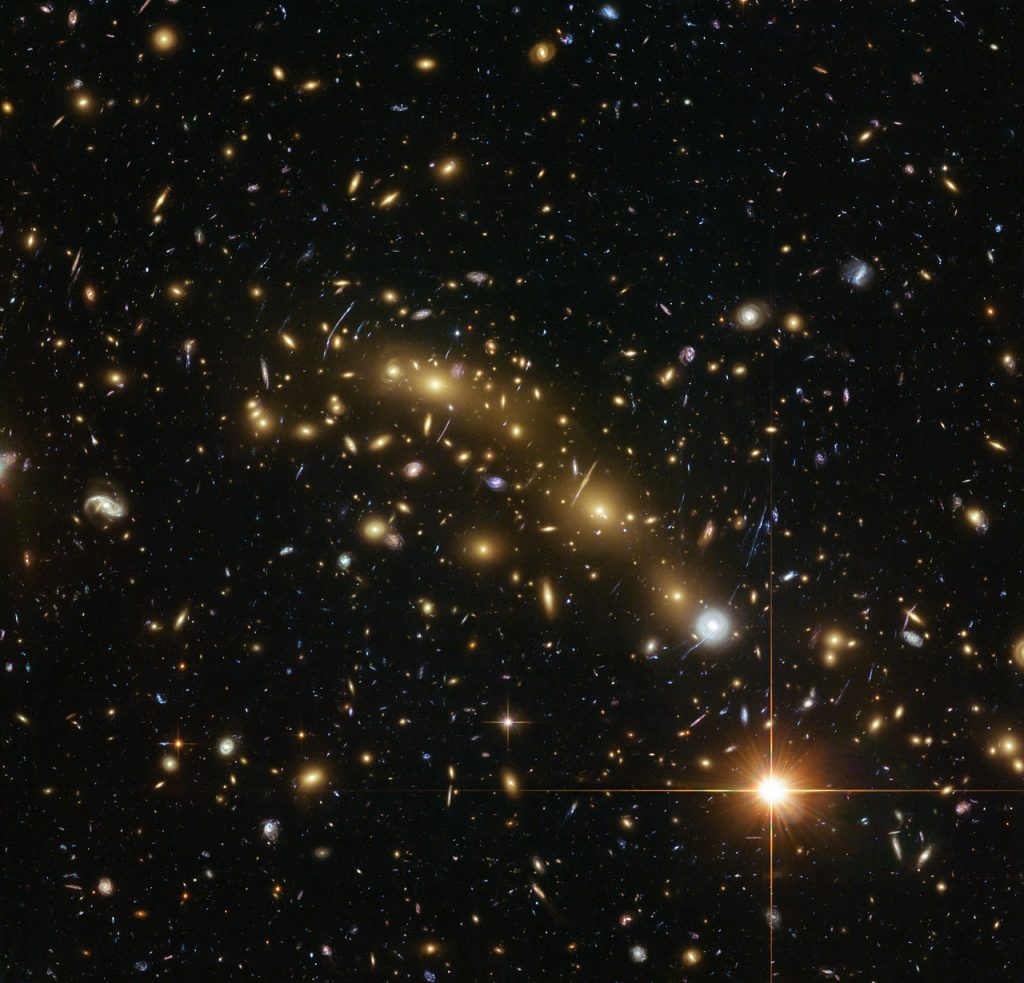
MACS J0416.1-2403, a cluster of galaxies seen four billion years in the past, is one of many such systems studied by Michael West and his collaborators. The elongated distribution of galaxies has been shaped by the cosmic web of matter on larger scales. (ESA/Hubble)
Large-scale structures
Dr. Michael West looks at the big picture of the universe, studying the large-scale structures there. For example, he and his collaborators showed that giant elliptical galaxies at the centers of rich galaxy clusters are elongated in the same direction as the larger distribution of matter determined by the cosmic web of dark matter. West’s research interests also include curios of the cosmos, such as cannibal galaxies and orphaned star clusters. He began his career as a theorist – his Ph.D. dissertation was a computational study of the growth of galaxy clusters in universes dominated by different types of dark matter – but over the years he gradually moved more into observational astronomy.
Learn more about Dr. Michael West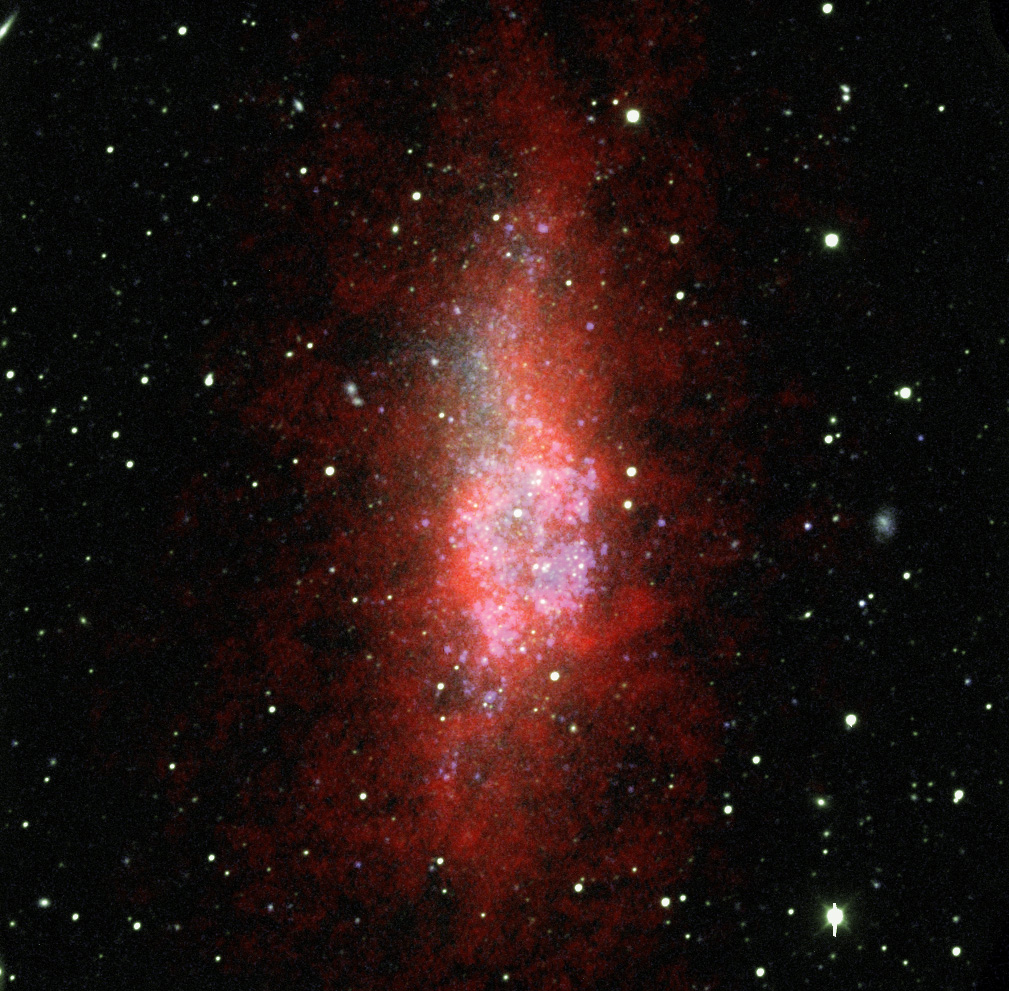
Dwarf irregular galaxy WLM, a member of the Local Group of galaxies. Neutral hydrogen gas is red, light from older stars (visual V-band) is green, and light from young stars (GALEX far ultraviolet) is blue. (The LITTLE THINGS Team, 2012, Astronomical Journal, 144, 134)
How do new stars form?
Haylee Archer is a graduate student at Arizona State University working with Hunter on her Ph.D. studies of the dwarf irregular galaxy WLM. She is using data from the Atacama Large Millimeter Array, Herschel far-infrared space telescope, Spitzer mid-infrared space telescope, Very Large Array radio interferometer, Galaxy Evolution Explorer (GALEX) far-ultraviolet satellite, and optical images obtained with the Lowell Observatory Hall 1.07m and Perkins 1.8m telescopes. Archer is using these data to broaden our understanding of molecular clouds and star formation in low metallicity dwarf irregular galaxies. She is addressing questions about 1) the environments in which star-forming molecular clouds seen in CO form, 2) how “dark” gas, molecular hydrogen gas not traceable in CO, relates to molecular clouds, 3) whether star formation can take place in the far outer stellar disk, and 4) the effects on star formation products of a different molecular cloud structure at low metallicities.
Learn more about Haylee Archer

